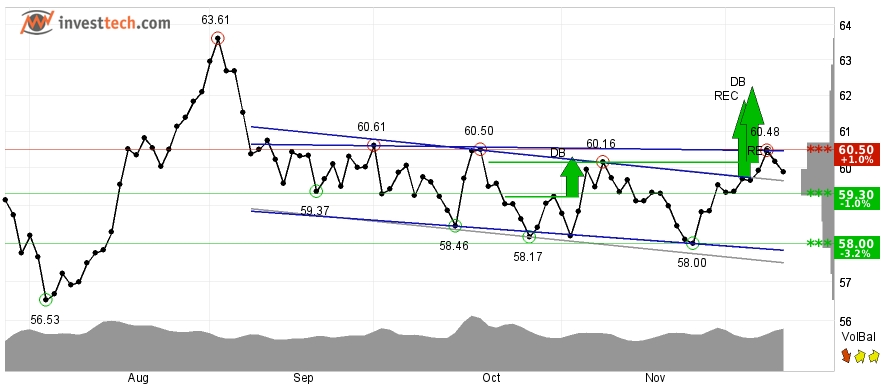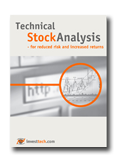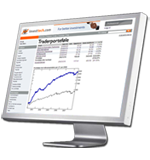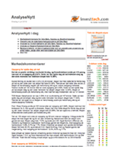Investtech Research: Buy signals from short term double bottom formations contradict established technical analysis theory
Published 16 December 2019
Geometric price patterns, like double bottom and double top formations, are used in technical analysis to predict future price development. New research results from Investtech show that buy signals from short term double bottom formations statistically contradict established technical analysis theory, and have in fact been good sell signals. Signals from long term double bottom formations have, in line with the theory, been good buy signals.
Identification of geometric price patterns in stock prices is an important area of technical analysis. The idea is that these patterns describe the investors’ mental state, i.e. whether they will want to sell or buy stocks in the time ahead, and they thereby indicate the future direction of the stock price. Double bottom formations are one type of such patterns.
A double bottom formation indicates the end of a falling trend. When a double bottom formation is formed, it mirrors increasing optimism among investors and indicates that the stock enters a rising trend. Double bottom formations are used to predict long term market trend reversals, but are also used in the shorter term.
Investtech’s algorithms identify such formations for you. In our price charts, double bottom formations are shown by code DB and a green upwards arrow. The arrow shows theoretical price target. A current example may be Unilever, which triggered a positive signal from a double bottom formation on December 9th.
Figure 1: Unilever NV (UN.US) Close: 59.89 (-0.29), Dec 11, 2019
Our subscribers can find stocks with these positive signals using for instance the tool Signals.
We wanted to study the statistical results yielded by these buy signals and therefore studied return from Norwegian, Swedish, Danish and Finnish stocks following buy signals from double bottom formations and sell signals from double top formations identified in Investtech’s price charts in the short, medium and long term. We had up to 23 years of data, from 1996 to 2018.
The chart below shows average price development following buy signals from double bottom formations identified in Investtech’s short term price charts in the Nordic markets. The signals are triggered on day 0. Only days when the exchange is open are included, so 66 days equal approximately three months. The thick blue line shows the development of buy signal stocks. The shaded areas are the standard deviation of the calculations. The thin blue line shows benchmark development in the same period as the buy signal stocks.
Figure 2: Return following buy signals from double bottom formations, short term. Nordic markets combined.
Buy signals from short term double bottom formations have given an excess return of -0.7 percentage points after one month, equal to an annualised excess return of -8.3 percentage points.
Buy signals from medium term double bottom formations have given an excess return of 0.0 percentage points in three months, equal to an annualised excess return of 0.2 percentage points. The difference vs benchmark is small and the signals are considered to have low signal power in the medium term.
In the long term, buy signals from double bottom formations have given an excess return of 1.6 percentage points after three months, equal to an annualised excess return of 7.1 percentage points. However, t-value after 66 days was a mere 1.4, which is too little to say that the signal stocks have given statistically significant excess return vs benchmark, when compared to benchmark in the same period.
Buy signals from short term double bottom formations can give excellent sell opportunities, while it is likely they can be ignored in medium term analyses. Compared to average benchmark for the whole time period, buy signals from long term double bottom formations indicate future price rise for signal stocks, clearly outperforming market in the next 22 days and somewhat better in the next 66 days.
Please find more details and results in the research reports here (available to subscribers on the Professional and Institutional levels):
Double top/bottom formations, short term
Double top/bottom formations, medium term
Double top/bottom formations, long term
Geschreven door

Hoofd research en analyse
in Investtech
Article on sell signals:
Sell signals from double top formations have little signal power
Insight & Skills:
"Investtech analyseert de psychologie in de markt en geeft u iedere dag concrete trading-voorstellen."

Partner & Senior Advisor - Investtech
Investeringsaanbevelingen worden gedaan door Investtech.com AS ("Investtech"). Investtech garandeert geen volledigheid of juistheid van de analyses. Eventuele fouten in de aanbevelingen, koop- en verkoopsignalen en mogelijke negatieve gevolgen hiervan zijn geheel het risico van de belegger. Investtech neemt geen enkele verantwoordelijkheid voor verlies, direct of indirect, als gevolg van het gebruik van Investtechs analyses. Meer informatie omtrent Investtechs analyses kunt u vinden op disclaimer.
Investeringsaanbevelingen worden gedaan door Investtech.com AS ("Investtech"). Investtech garandeert geen volledigheid of juistheid van de analyses. Eventuele fouten in de aanbevelingen, koop- en verkoopsignalen en mogelijke negatieve gevolgen hiervan zijn geheel het risico van de belegger. Investtech neemt geen enkele verantwoordelijkheid voor verlies, direct of indirect, als gevolg van het gebruik van Investtechs analyses. Meer informatie omtrent Investtechs analyses kunt u vinden op disclaimer.


 Oslo Børs
Oslo Børs Stockholmsbörsen
Stockholmsbörsen Københavns Fondsbørs
Københavns Fondsbørs Helsingin pörssi
Helsingin pörssi World Indices
World Indices US Stocks
US Stocks Toronto Stock Exchange
Toronto Stock Exchange London Stock Exchange
London Stock Exchange Euronext Amsterdam
Euronext Amsterdam Euronext Brussel
Euronext Brussel DAX
DAX CAC 40
CAC 40 Mumbai S.E.
Mumbai S.E. Commodities
Commodities Currency
Currency Cryptocurrency
Cryptocurrency Exchange Traded Funds
Exchange Traded Funds Investtech Indices
Investtech Indices



